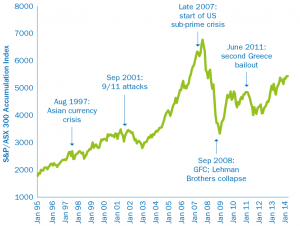It’s an important skill but many people are still not as financially literate as they should be. Here are some ways that may help you improve.
Financial well-being is defined1 as when a person is able to meet expenses and has some money left over, is in control of their finances and feels financially secure, now and in the future. However, financial decision-making is complex and contextual and often we need help to understand what to do.
The latest Australian Securities and Investments Commission (ASIC) Australian Financial Attitudes and Behaviour Tracker, which monitors financial attitudes and behaviour in adults, showed Australians had some great habits when it comes to their finances but that there were also ways we could improve.
Healthy financial habits
About nine in 10 respondents to the ASIC survey said they kept track of their finances in some way and eight in 10 had a budget2. Significantly, 23 per cent said they always stuck to their budget.3
Keeping track of your finances is crucial to strong financial literacy. Here are some quick tips:
- set a budget for your weekly expenses and stick to it
- check your bank and credit card statements regularly
- save something from every pay.
Educate yourself
Staying on top of the latest financial information and learning key concepts may help you understand more about what you need to discuss with an adviser. Generally, there’s a low understanding of key investment concepts when choosing financial products. Fewer than one in three respondents to the ASIC survey understood the risk-return trade-off and only four in 10 understood the principle of diversification in investing.4
Do your research
There is a lot of financial information at hand and it’s easy to get overwhelmed and stick with what you know – but committing to researching the latest on finance monthly or checking in with your financial adviser every quarter is all it may take to update your financial knowledge and skills and make better informed decisions.
Think long term
A long-term financial plan may help you see the ‘big picture’ of your finances. However, only about one in four respondents had a long-term financial plan, with 63 per cent monitoring their progress in the past six months.5 If you set a long-term financial plan, you can work towards it every day and even if the goal is just to get out of debt, the satisfaction of reaching it will be worth the effort.
Talk to your adviser
Your adviser may help you achieve a higher level of financial literacy and give you a financial plan that remains in sync with all the changes in your life.
A Financial Adviser could work with you to develop a financial plan that’s specifically tailored to your needs, so get in touch with Dev Sarker today on 1300 71 71 36.
1 www.financialliteracy.gov.au/media/560752/research-unsw-fla-exploringfinancialwellbeingintheaustraliancontext-report-201709.pdf
2 www.financialliteracy.gov.au/research-and-evaluation/financial-attitudes-and-behaviour-tracker
3 www.financialliteracy.gov.au/research-and-evaluation/financial-attitudes-and-behaviour-tracker
4 www.financialliteracy.gov.au/research-and-evaluation/financial-attitudes-and-behaviour-tracker
